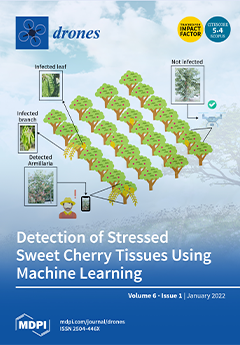At present, the great progress made by the Internet of Things (
) has led to the emergence of the Internet of Drones (
).
is an extension of the
,
[...] Read more.
At present, the great progress made by the Internet of Things (
) has led to the emergence of the Internet of Drones (
).
is an extension of the
, which is used to control and manipulate drones entering the flight area. Now, the fifth-generation mobile communication technology (
) has been introduced into the
; it can transmit ultra-high-definition data, make the drones respond to ground commands faster and provide more secure data transmission in the
. However, because the drones communicate on the public channel, they are vulnerable to security attacks; furthermore, drones can be easily captured by attackers. Therefore, to solve the security problem of the
, Hussain et al. recently proposed a three-party authentication protocol in an
environment. The protocol is applied to the supervision of smart cities and collects real-time data about the smart city through drones. However, we find that the protocol is vulnerable to drone capture attacks, privileged insider attacks and session key disclosure attacks. Based on the security of the above protocol, we designed an improved protocol. Through informal analysis, we proved that the protocol could resist known security attacks. In addition, we used the real-oracle random model and ProVerif tool to prove the security and effectiveness of the protocol. Finally, through comparison, we conclude that the protocol is secure compared with recent protocols.
Full article





